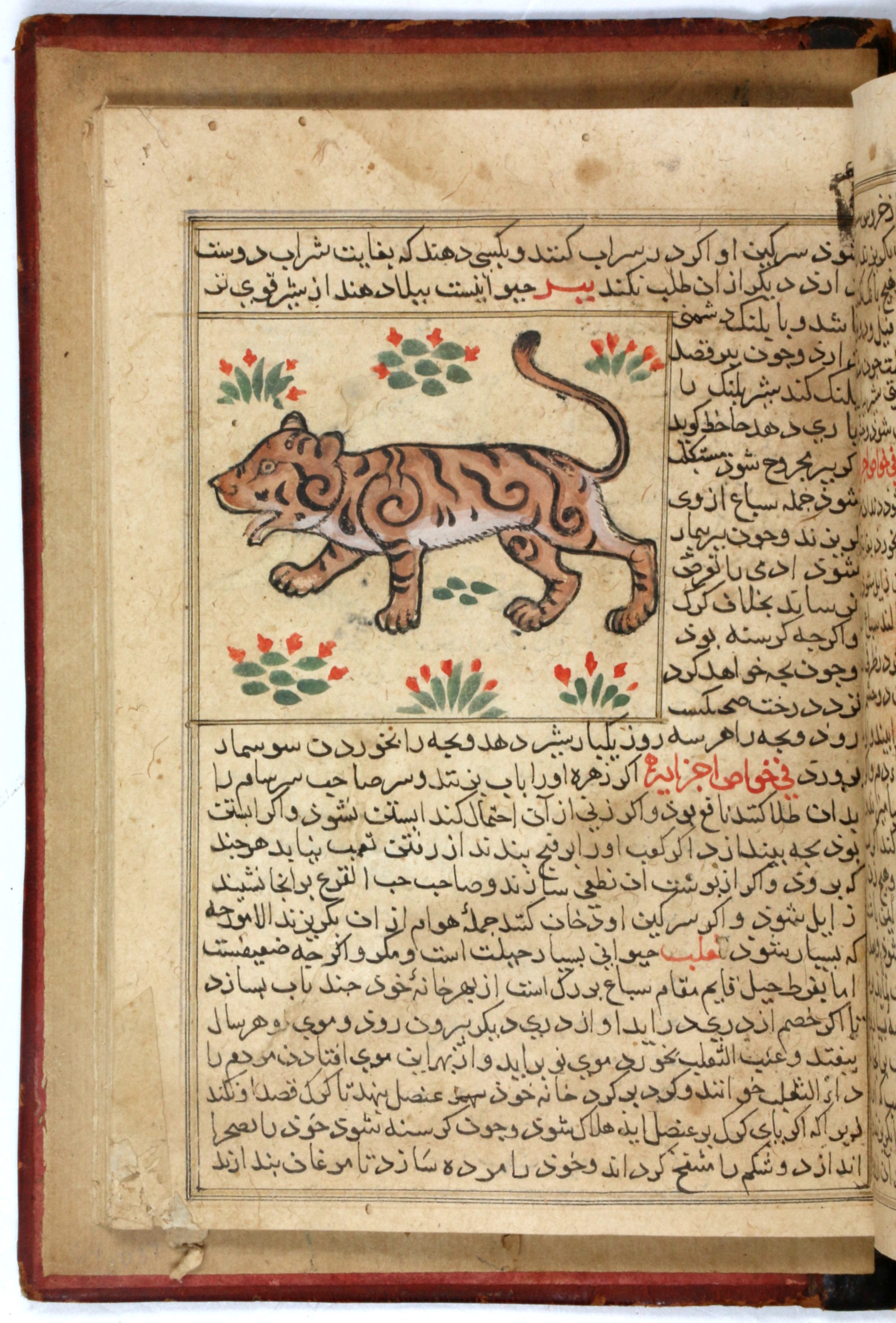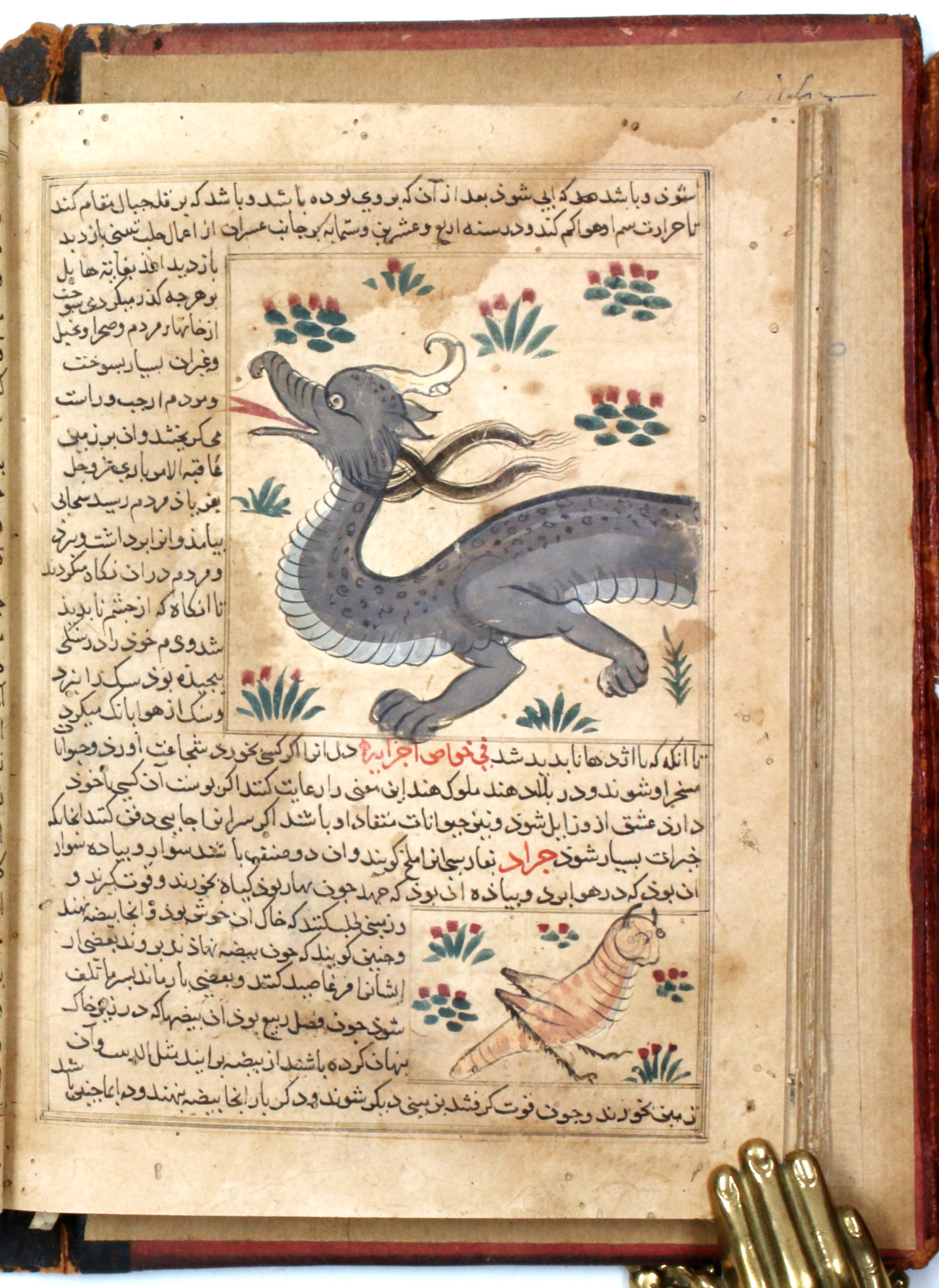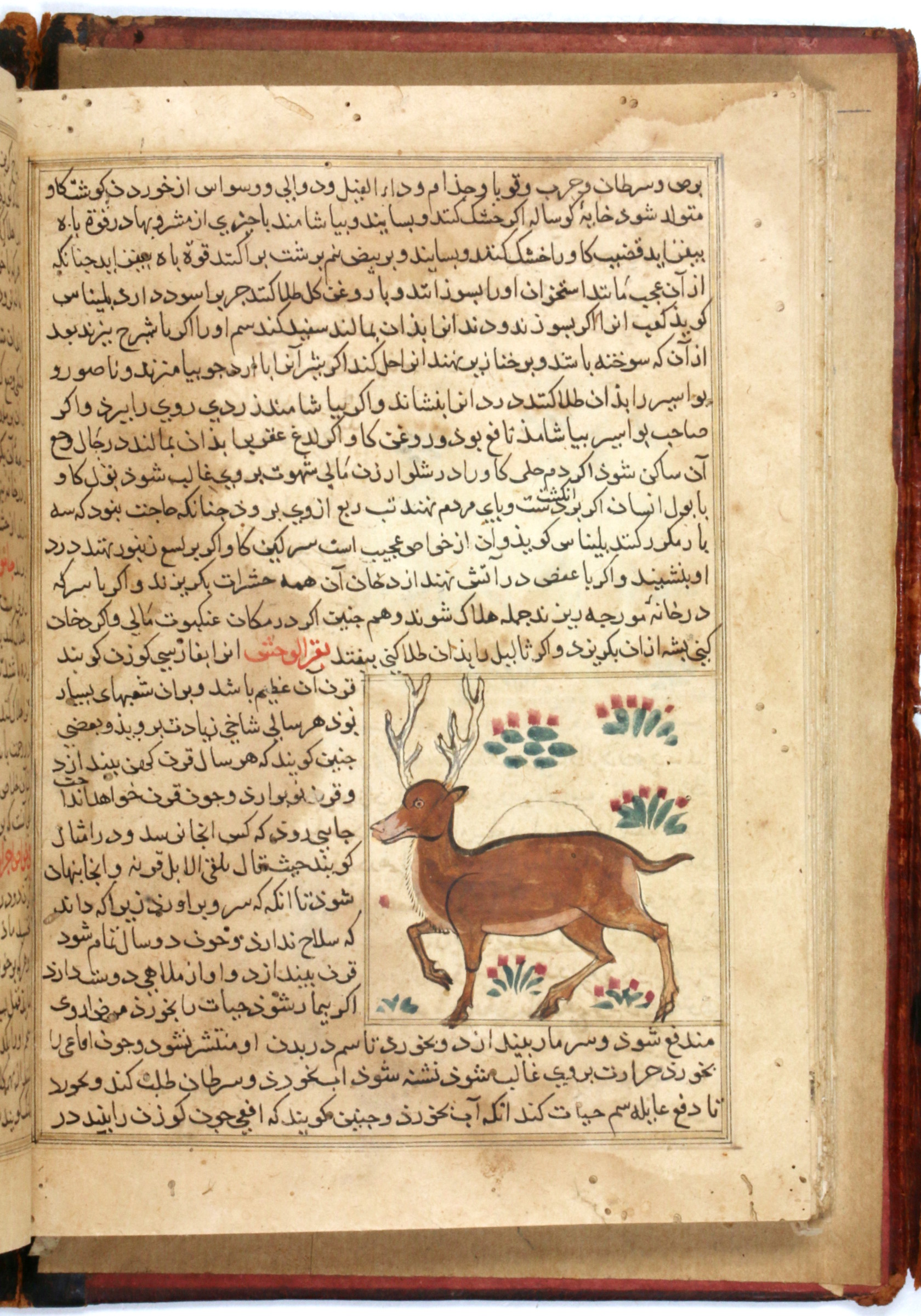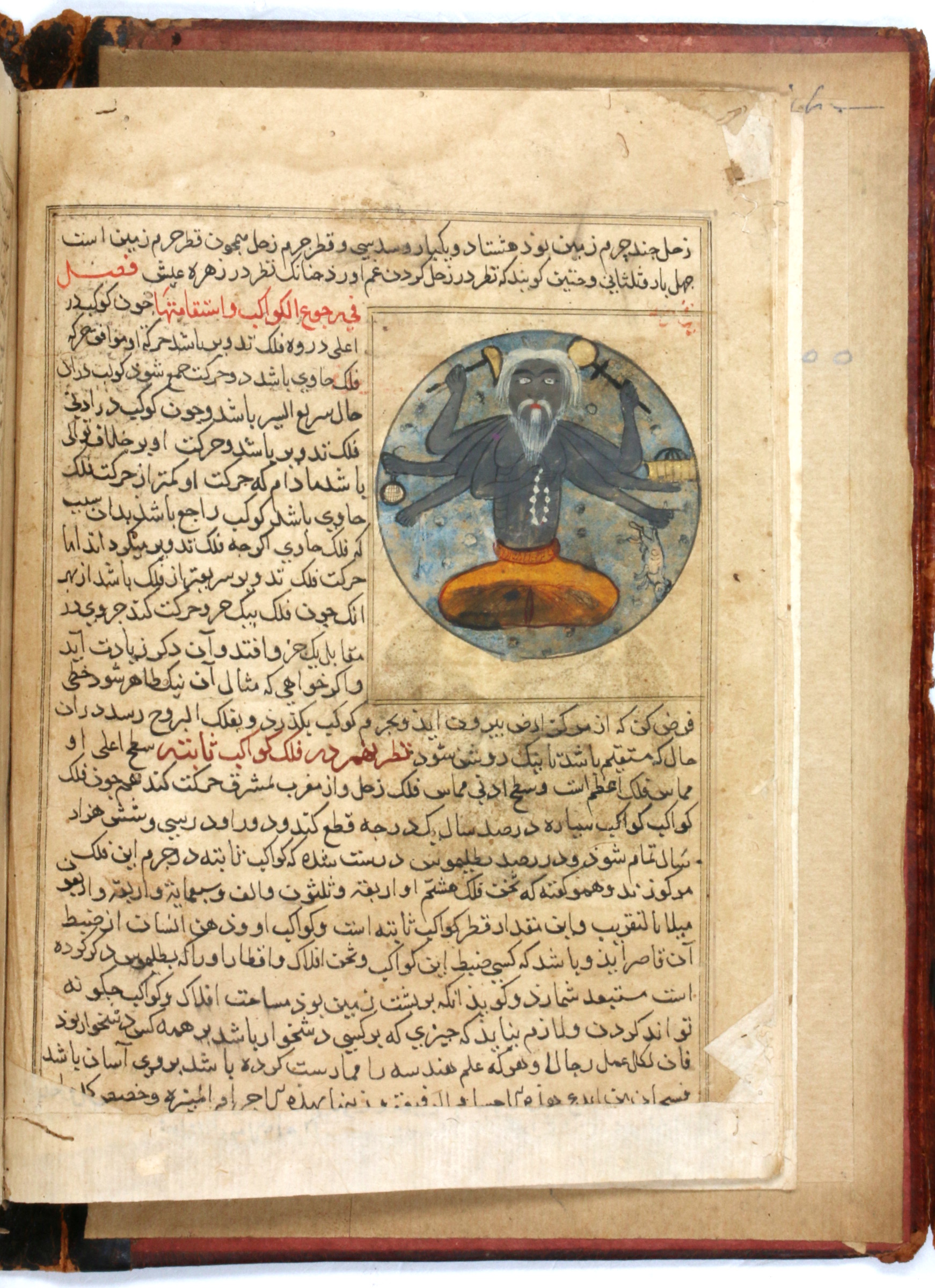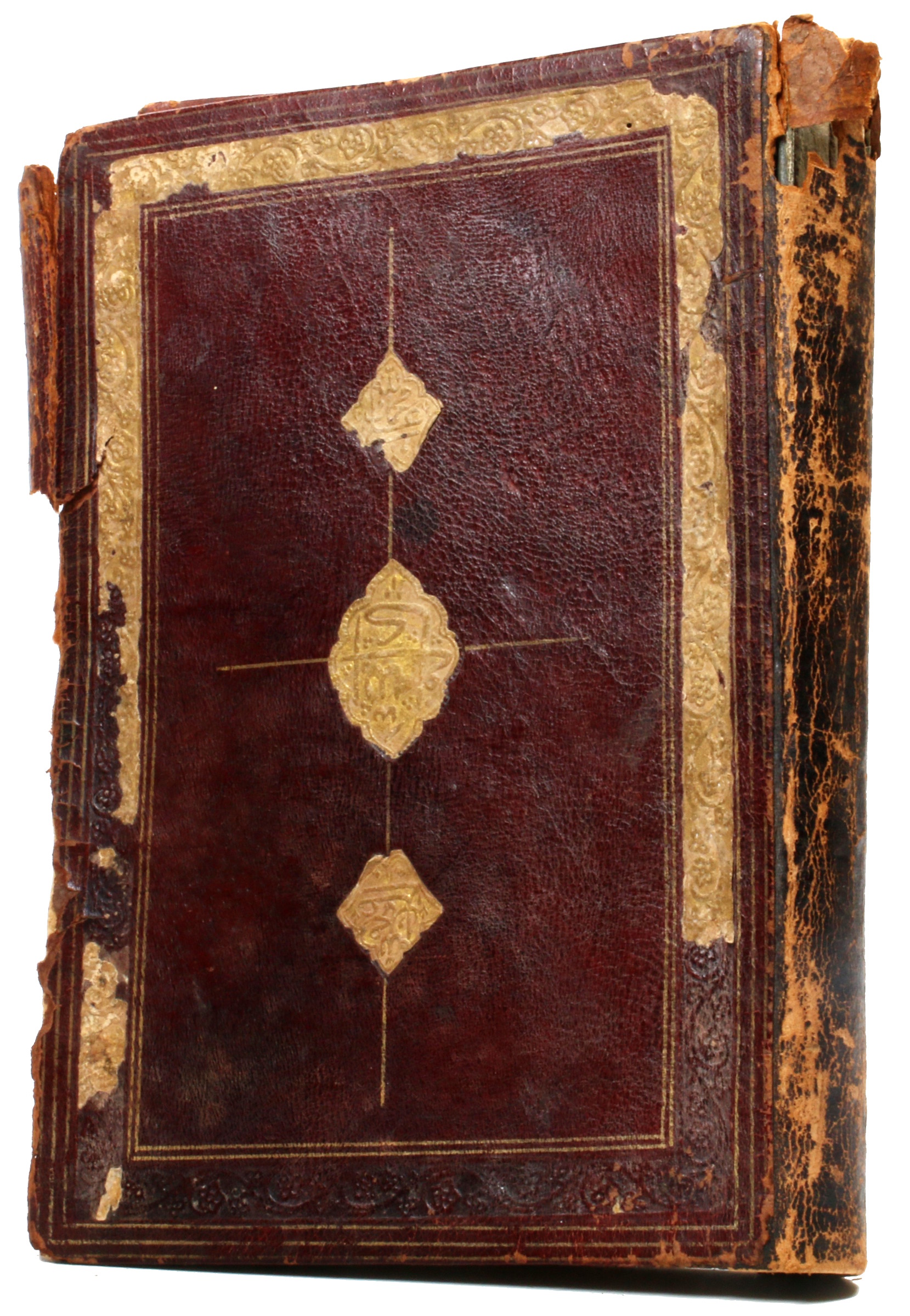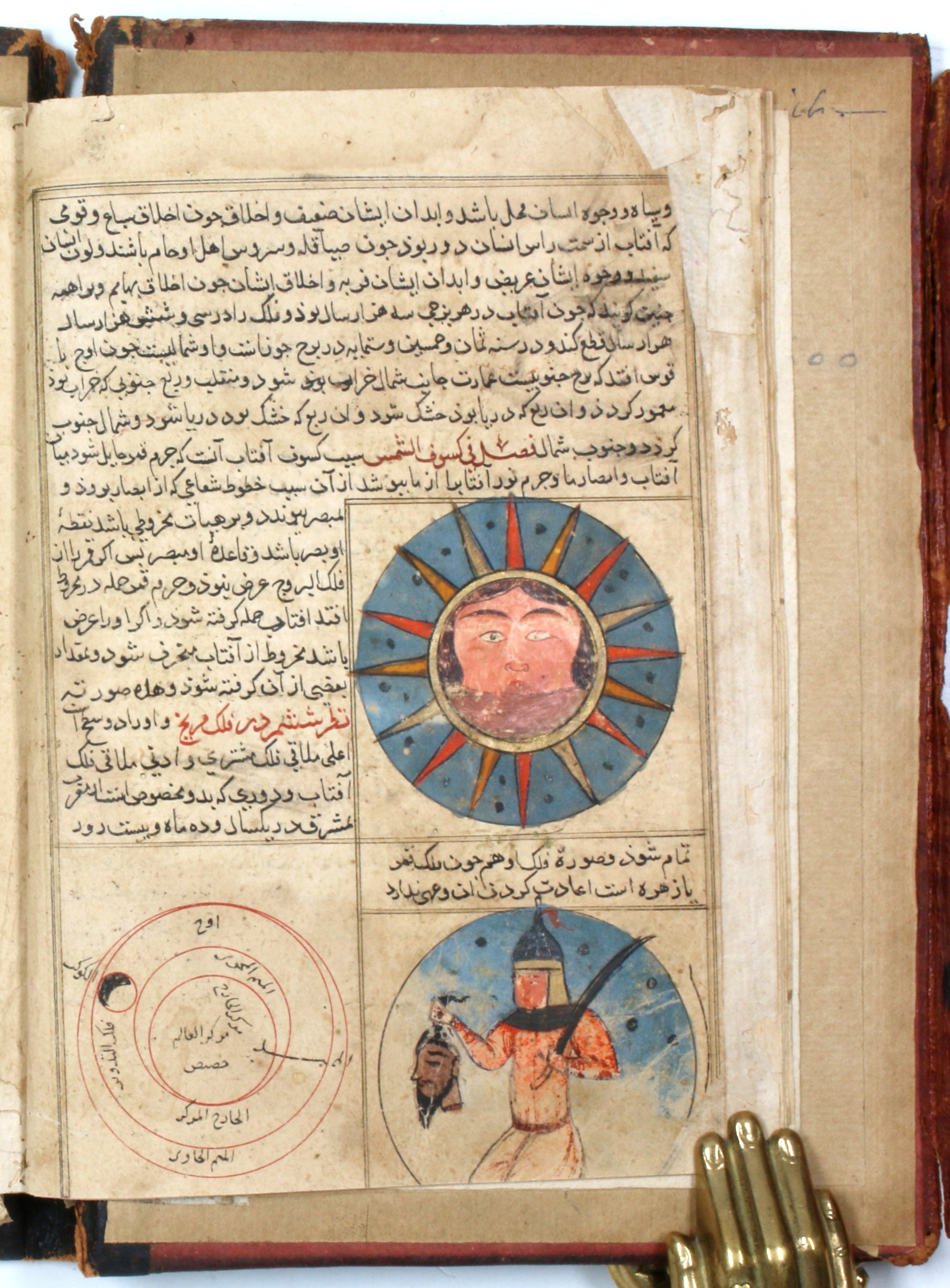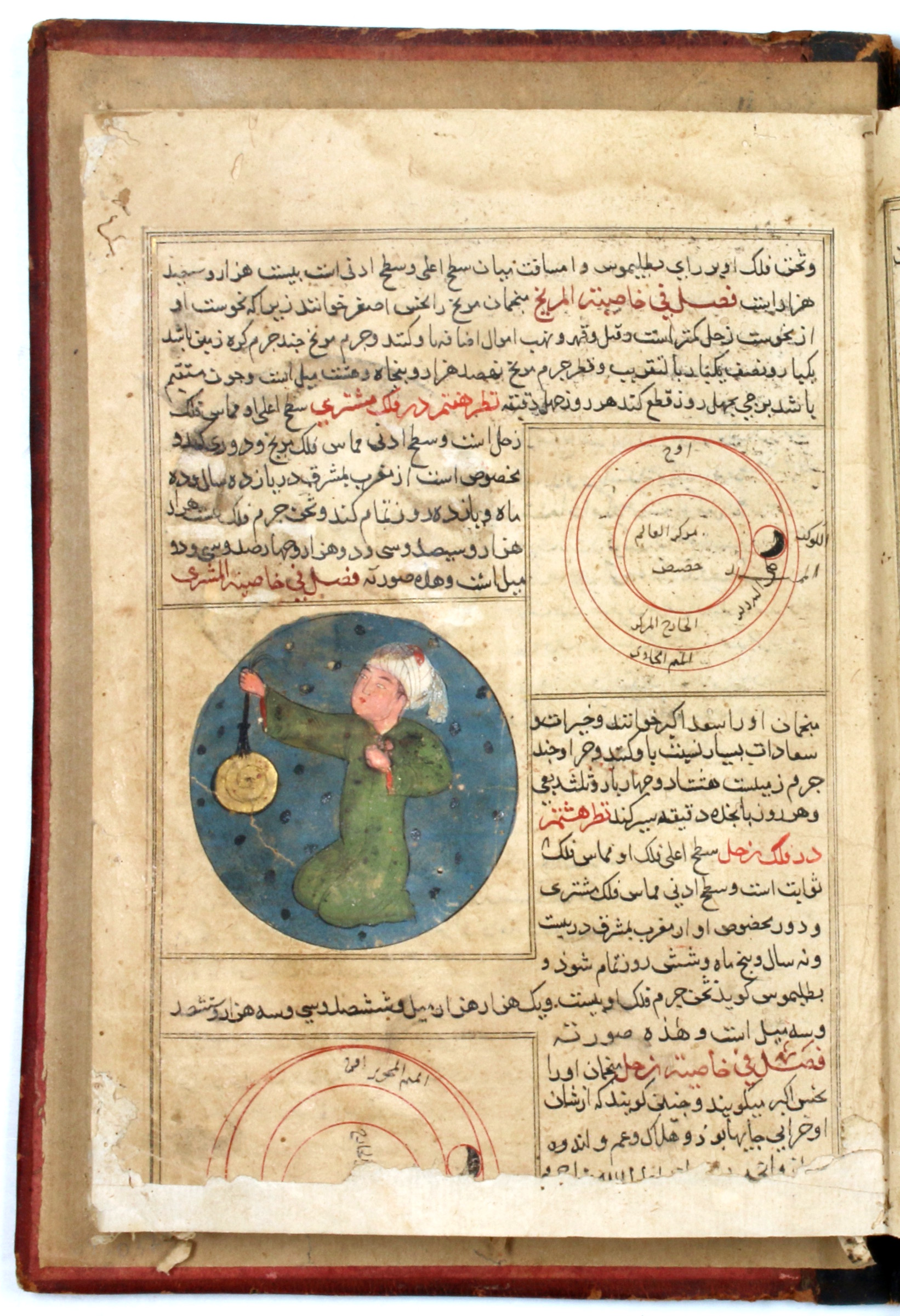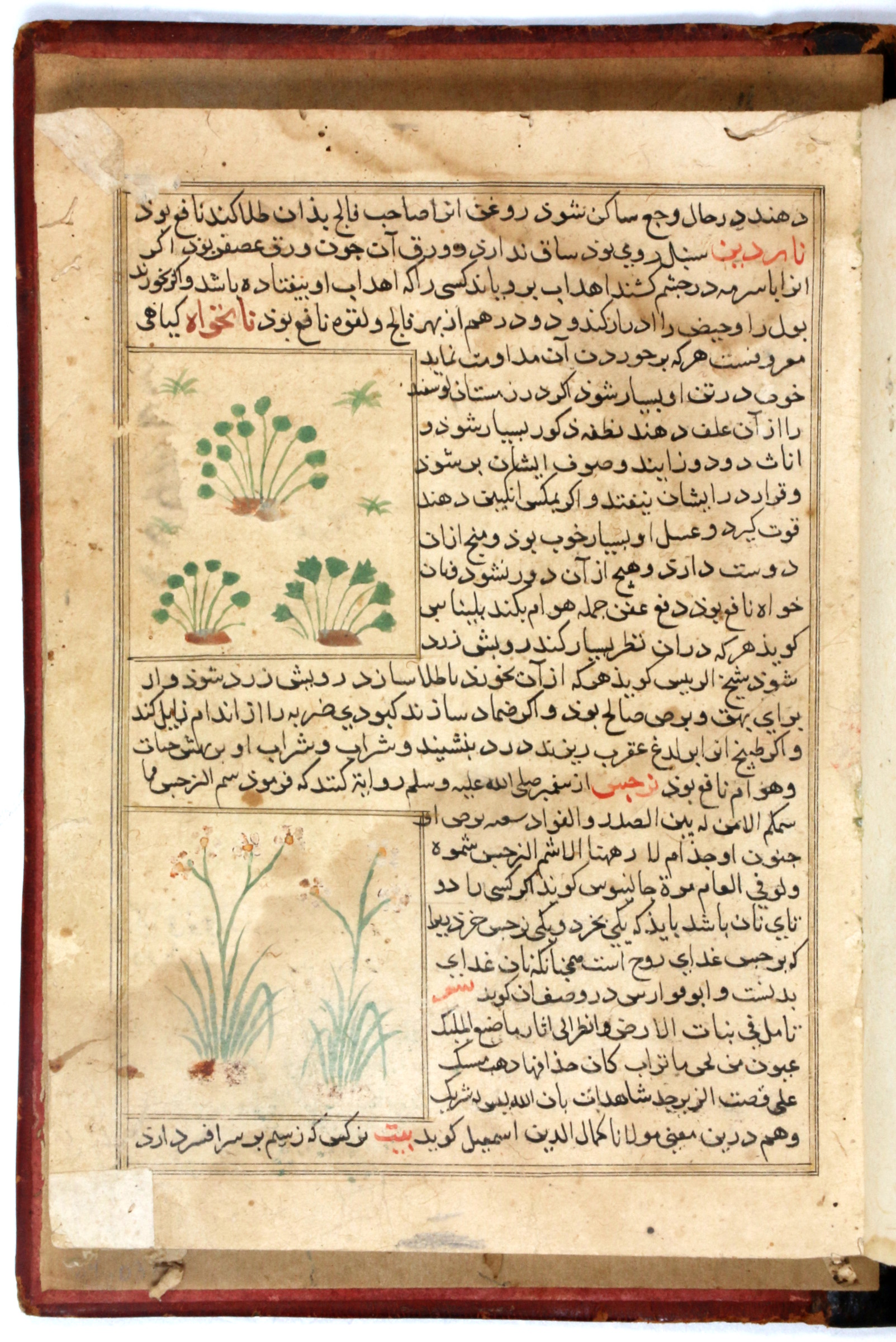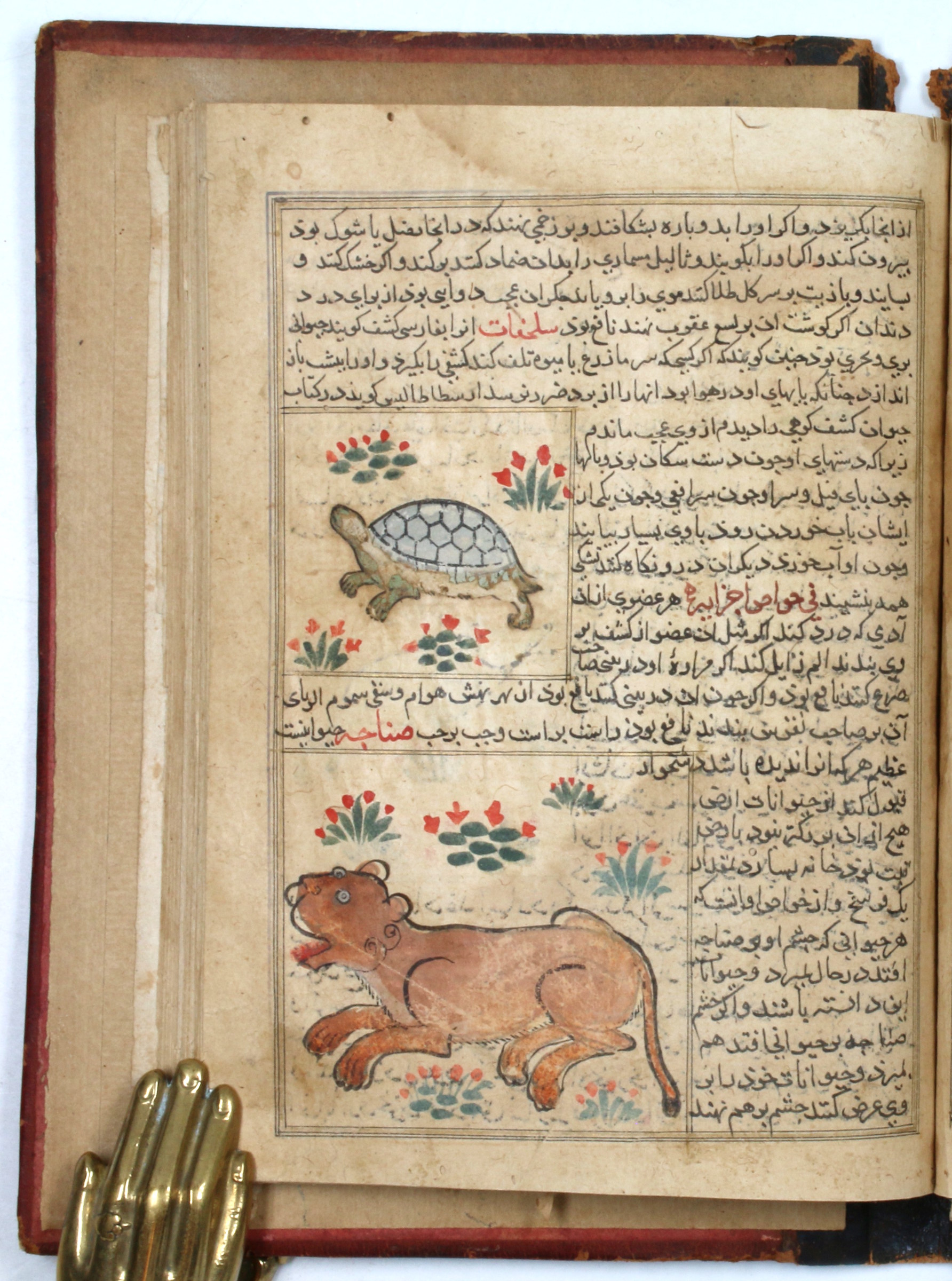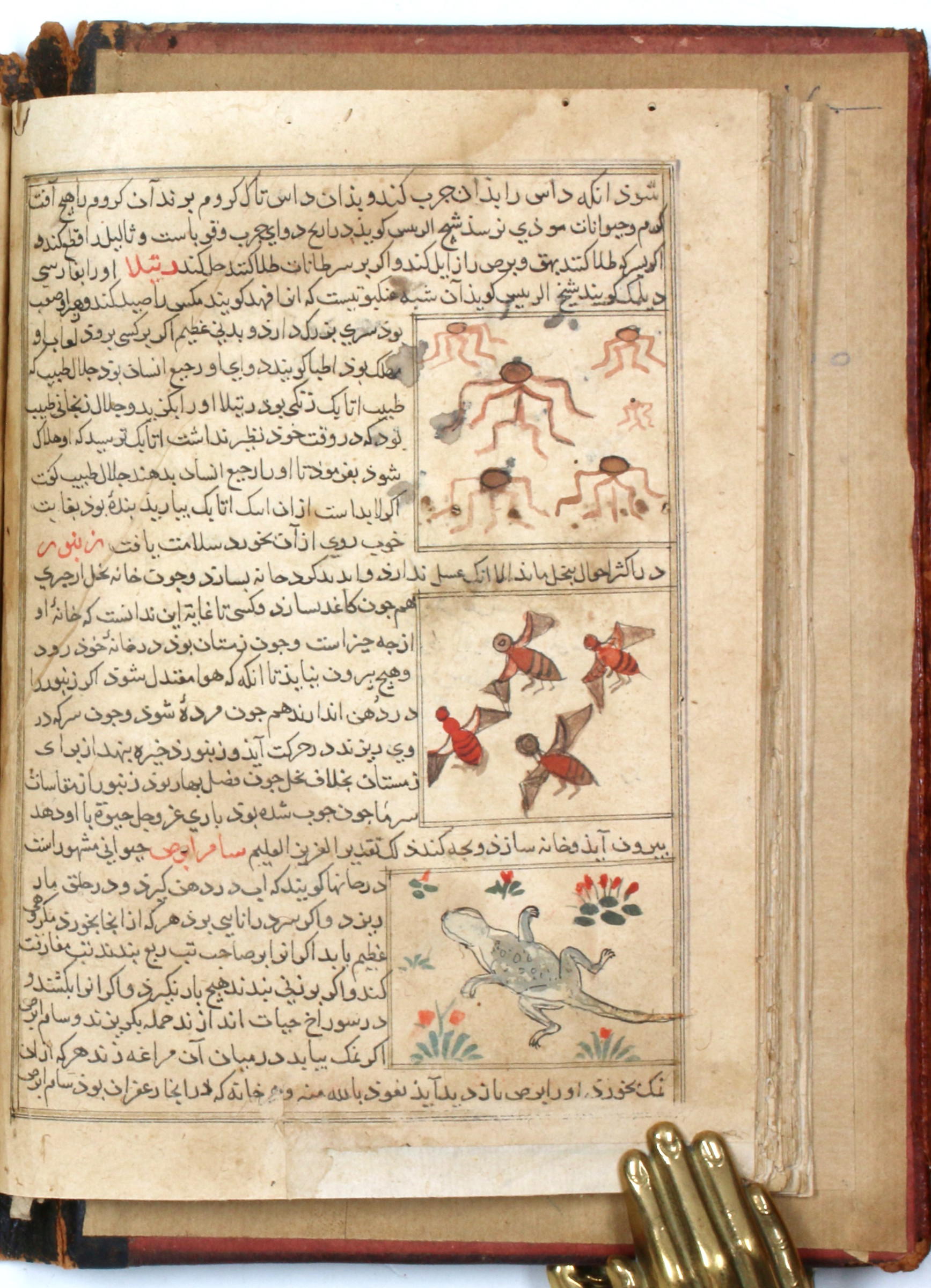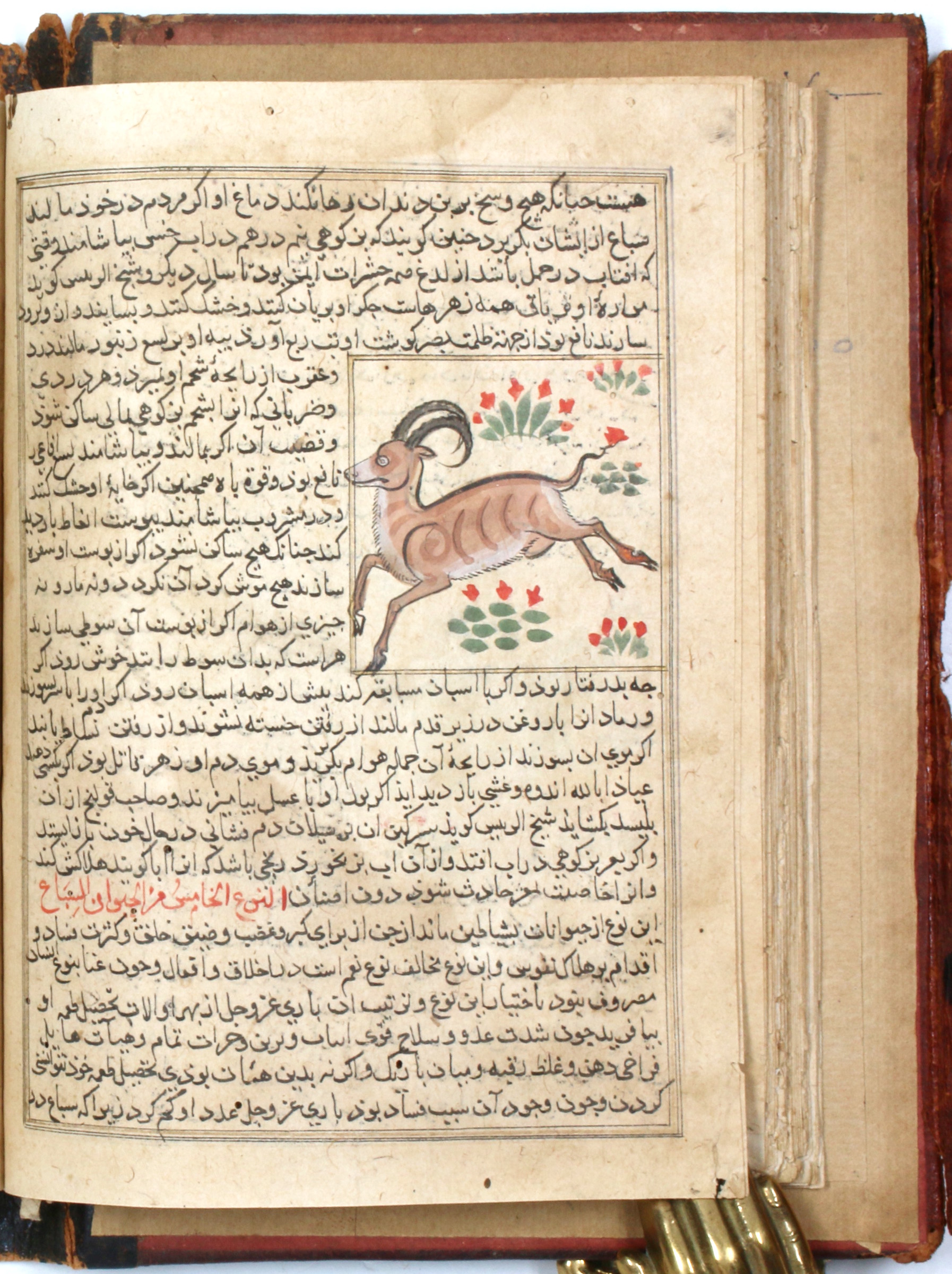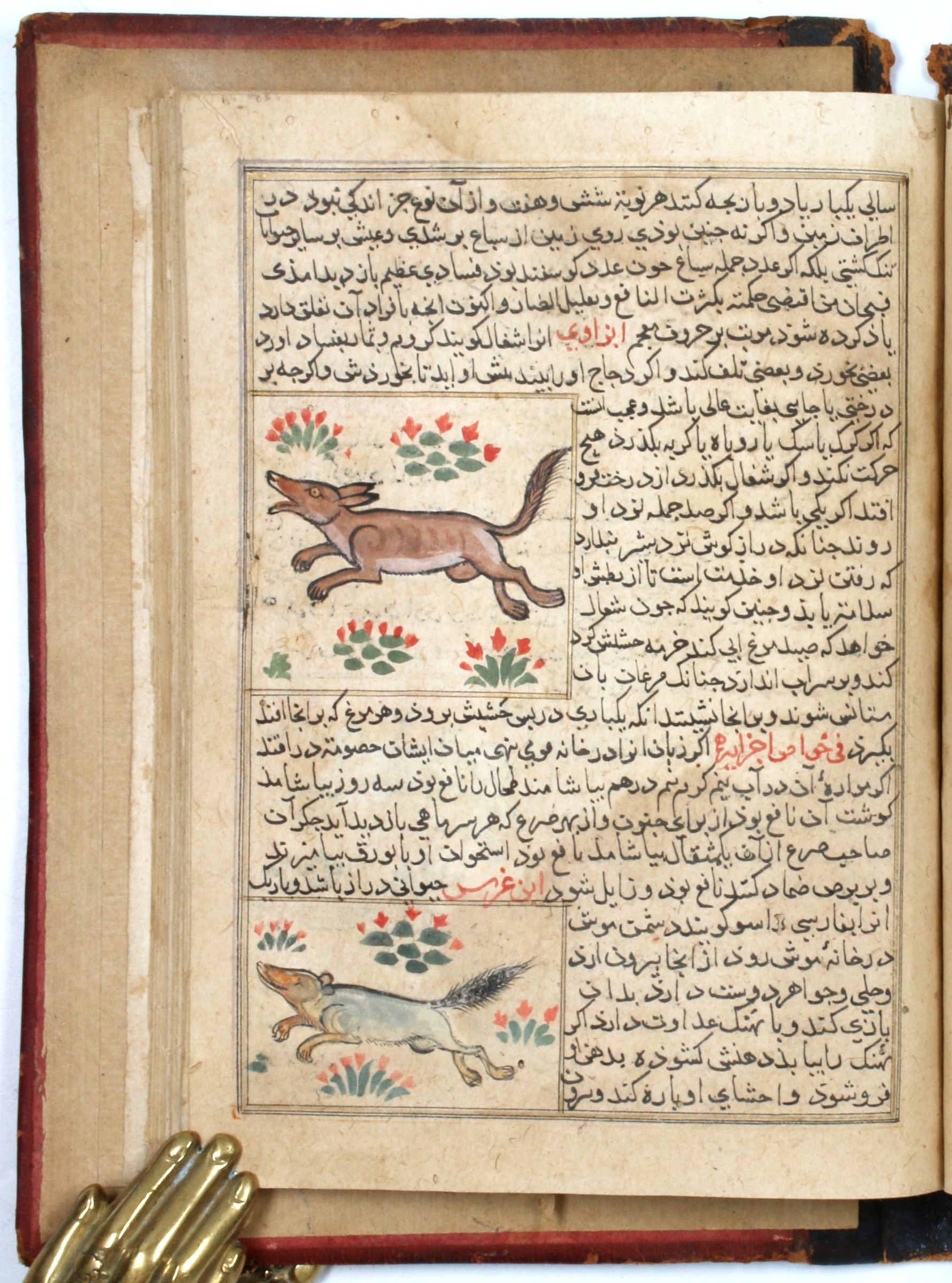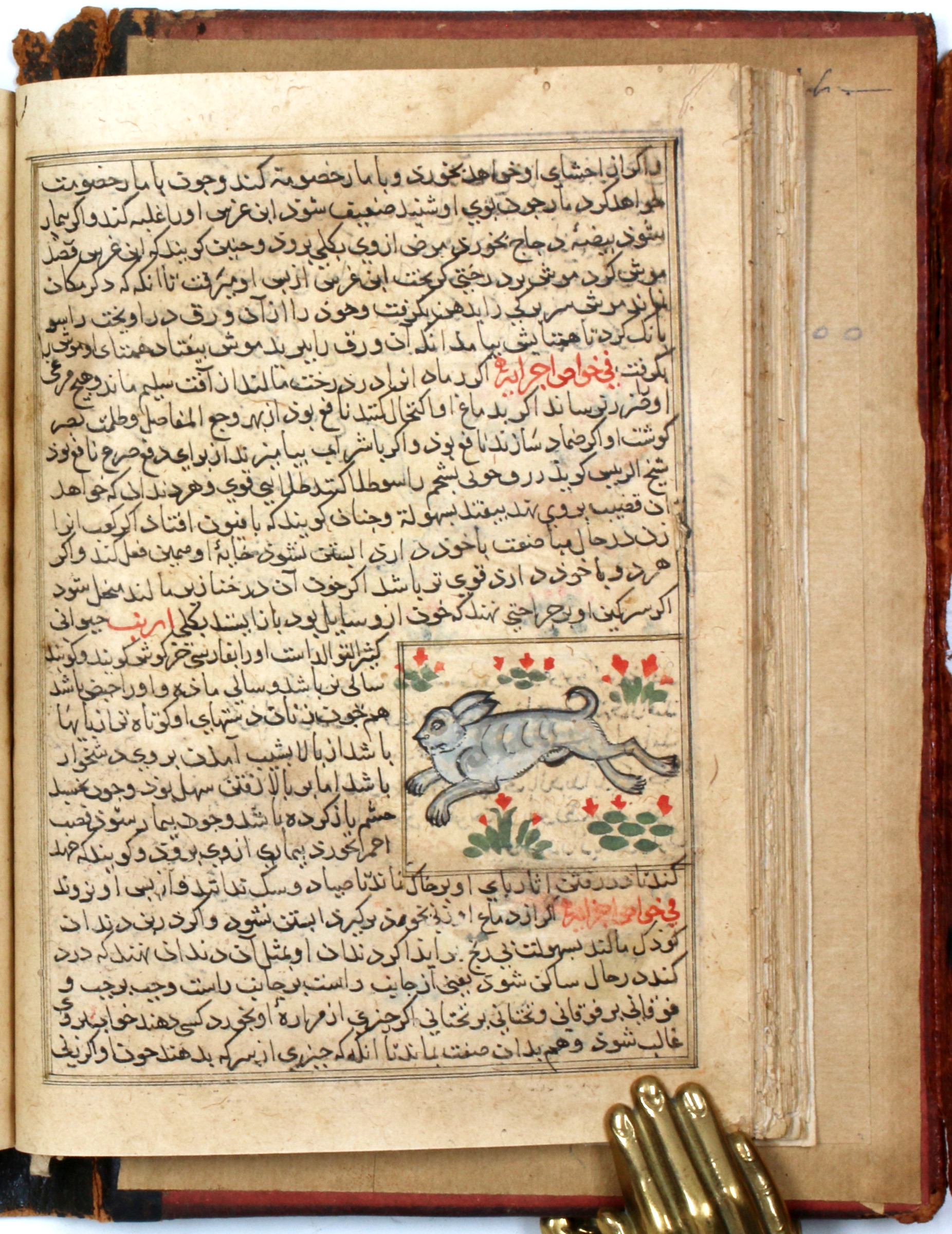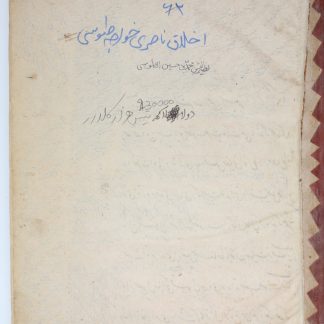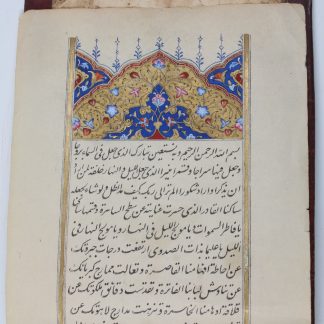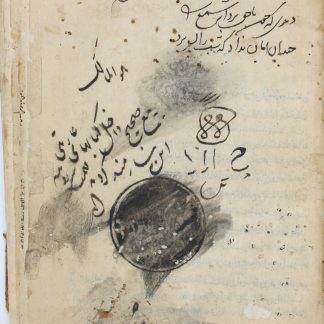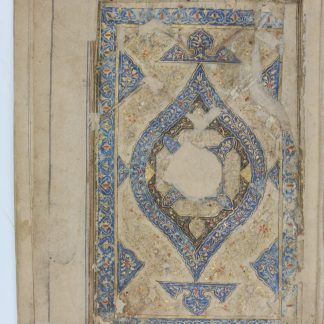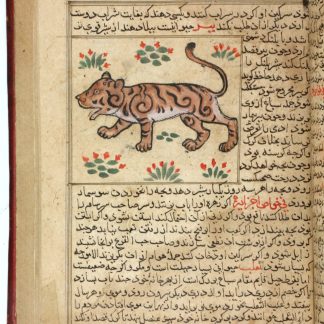Cosmology and wonder-tales, splendidly illustrated
'Aja'ib al-Makhluqat wa Ghara'ib al-Mawjudat [A section of The Wonders of Creation and the Oddities of Existence].
8vo (153 x 212 mm). 76 ff., partial, wanting the beginning and ending sections in particular. Persian manuscript on paper. Black naskh script ruled in gilt, with important words and phrases picked out in red. Illustrated with 148 in-text paintings in gouache.
€ 45.000,00
The great work of the cosmographer al-Qazwini: a manuscript comprising several sections of his "'Aja'ib al-Makhluqat", wonderfully illustrated with numerous miniatures. These colourful paintings show an elephant giving birth, men riding birds, astronomical diagrams, numerous delicate paintings of birds and insects, and more. The "Wonders of Creation" is, as a text, a cavalcade of the religious, the scientific, and the fantastic from which al-Qazwini's cosmos was formed. Beginning with Creation, the work covers an incredible range of philosophy, astronomy, anthropology, Muslim theology, and wonder tales; it was originally written in Arabic, but appears here in its Persian translation and manuscript tradition.
While wide-ranging, the work is not solely a collection of wonder tales: al-Qazwini discusses the structure of the universe, the movement of the solar system - with diagrams - and that of the Earth. His interest in the states of matter, geography, and cosmography, are well-known; his sources ranged from Classical philosophers like Aristotle to Muslim explorers like Ibn Fadlan (known in the West for recording the only textual witness to a Viking funeral). Al-Qazwini was one of the most fascinating encyclopedists of his time, and even wrote a work regarded as proto-science fiction, in which an alien man travels to Earth. His "Wonders of Creation" is fascinating, and the resulting manuscript traditions in Arabic and Persian are beautiful and eclectic. From the end of the 16th century, the text was introduced into India and numerous copies were then produced in the Deccan, based on Timurid and Safavid models.
Formerly in the collection of an Armenian antique dealer, Paris, 1980.
Covers lightly worn; marginal worming throughout, paper repairs throughout (some affecting illustrations), otherwise in good condition.
T. Lewick, 'Kazwini', in The Encyclopaedia of Islam (2nd ed.) IV, 865-867. For the author, see GAL S I, 882.

